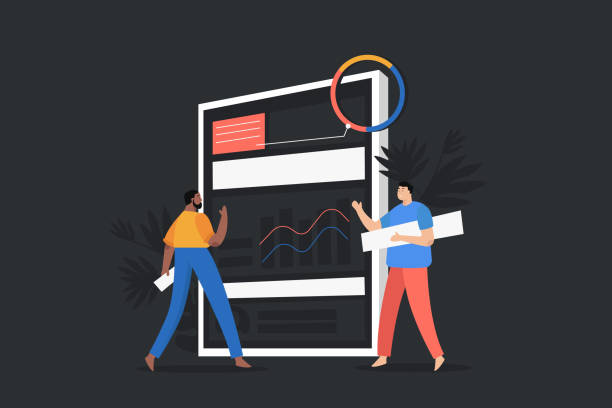Introduction and Importance of Multilingual Website Design
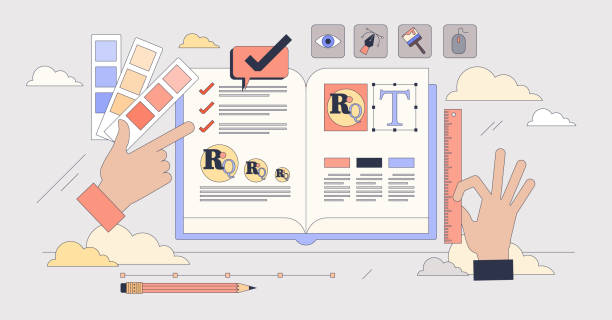
In this era of #globalization and widespread communication, having a powerful presence in the digital space is more vital than ever.
But is this presence limited to just one language? The answer is a resounding no.
Multilingual website design enables businesses and organizations to deliver their message to a wider audience around the world, transcending geographical boundaries.
This approach not only provides new opportunities for global marketing but also significantly enhances the credibility and professionalism of a business.
Imagine a user from Germany looking for a product or service you offer; if your website is available in German, the likelihood of them connecting with you and becoming a customer will be much higher.
This is a strategic necessity for any brand aiming for expansion.
Designing a website with multilingual capability goes beyond mere text translation; this process involves a deep understanding of cultural differences, regional considerations, and optimization for search engines in various languages.
A monolingual website keeps you away from a huge portion of the potential market.
This is a major limitation in today’s interconnected world.
On the other hand, investing in multilingual sites can mean access to untapped markets and a significant increase in revenue.
This is a fundamental step towards globalization that brings you sustainable competitive advantages.
This section explains the why and how to start a fruitful journey in global digital marketing.
Today, statistics show that a large portion of internet users worldwide do not speak English.
This truth further highlights the necessity of focusing on supporting multiple languages in the website’s structure and content.
From an educational perspective, understanding this primary need is the first step towards entering the complex but fruitful world of multilingual website design.
This approach means considering all technical, content, and cultural aspects so that users from anywhere in the world can easily interact with your website and have an optimal user experience.
Does your company’s website create a professional and lasting first impression on potential customers? Rasawab, with its professional corporate website design, not only represents your brand’s credibility but also paves the way for your business growth.
✅ Building a powerful and trustworthy brand image
✅ Attracting target customers and increasing sales
⚡ Get free consultation
Challenges and Technical Considerations in Multilingual Website Design
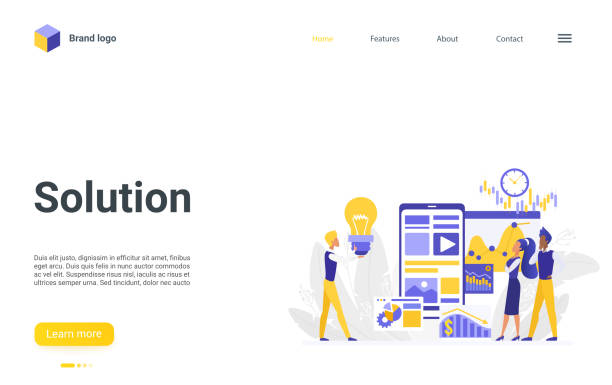
Implementing a successful multilingual website design is not limited to content translation; it requires a deep understanding of numerous technical challenges.
One of the most important challenges is URL structure.
Should we use subdomains (e.g., en.example.com), subdirectories (e.g., example.com/en/), or top-level domains for each country (e.g., example.de)? Each of these options has its own pros and cons in terms of SEO and management.
An incorrect choice can lead to serious problems in content indexing by search engines.
Another technical consideration is the correct use of the hreflang tag.
This tag helps search engines provide the correct version of a page based on the user’s language and geographical region.
Incorrect hreflang implementation can confuse search engines and lead to a decrease in website ranking in search results.
Additionally, text direction (RTL for Persian and Arabic, LTR for English and most European languages) is also a design and CSS challenge that must be carefully managed to provide a suitable user experience.
The user interface design must be adaptable for both directions.
Issues related to fonts and character encoding (such as UTF-8) are also of high importance to ensure that texts are displayed correctly in all languages and do not get corrupted.
Managing images and media files must also be optimized for each language and culture.
Choosing a Content Management System (CMS) that natively supports multilingualism or has powerful plugins for this purpose can alleviate many of these challenges.
These specialized aspects form the core of a robust and successful multilingual website design.
Ignoring any of these can lead to heavy reconstruction costs and the loss of international users.
Choosing the Right Platform for Multilingual Website Design

Choosing the right platform is one of the most critical decisions in multilingual website design.
This decision directly impacts the ease of management, scalability, and maintenance costs of your website.
Numerous Content Management Systems (CMS) are available, each with its own advantages and disadvantages for supporting multiple languages.
WordPress, with powerful plugins like WPML or Polylang, is one of the most popular options for multilingual sites.
These plugins allow for the translation of posts, pages, categories, and even theme strings.
However, it should be remembered that using too many plugins can affect website performance.
In contrast to WordPress, platforms like Drupal and Joomla inherently have more advanced multilingual capabilities in their core.
This can simplify multilingual content management for larger and more complex projects.
For larger businesses or websites with very specific needs, developing custom platforms is also an option.
This approach offers infinite flexibility but comes with much higher development costs and time.
The choice should be based on your budget, technical requirements, content volume, and development team.
Ultimately, the platform you choose must be optimized for multilingual SEO, easy translation management, support for various content formats, and the ability to provide a seamless user experience across all languages.
This is an analytical decision that requires careful consideration of each option’s features.
Below is a table comparing some popular platforms:
| Platform | Advantages for Multilingualism | Disadvantages for Multilingualism | Suitable for |
|---|---|---|---|
| WordPress | Powerful plugins (WPML, Polylang), large user community, relative simplicity | Requires plugins, increased complexity with many plugins, potential impact on performance | Blogs, small to medium corporate websites |
| Drupal | Multilingual capability in core, high scalability, strong security | More complex for development and management, steep learning curve | Large and complex projects, government and institutional websites |
| Joomla | Multilingual support in core, relatively user-friendly interface | Smaller user community compared to WordPress, some challenges in SEO | Corporate websites, medium online stores |
Optimizing Content for Different Languages

After choosing the right platform for multilingual website design, it’s time for the most important part: content.
Optimizing content for different languages goes beyond simple translation; this process involves Localization, where content is adjusted according to the culture, customs, and even common idioms in each geographical region.
Word-for-word translation can lead to misunderstandings or even unintended offense.
Localized content not only conveys the message correctly but also creates a sense of closeness and a deeper connection with the audience.
This includes adapting units (such as currency or measurement), date and time formats, and even colors and images.
The challenging question here is: should we always create entirely new content for each language or can we simply translate? The answer is, it depends on your goal and the extent of cultural differences.
For some products or services, a high-quality translation is sufficient, but for deeper marketing and impactful campaigns, localized and even specially created content for that specific language and culture will be much more effective.
This approach is particularly important in “About Us” sections, success stories, and blog content that heavily rely on storytelling and emotional connection.
Another point is keyword research for each language.
Common keywords in one language may not have a similar meaning in another or may be searched with a different frequency.
Using local keyword research tools and collaborating with native experts is key to success in this stage.
Optimizing titles, meta descriptions, and URLs for each language is also essential for search engines to properly index your pages.
Finally, the quality of translation must be high; using native translators specializing in your field ensures that the content not only is correct but also sounds natural and fluent.
This instructional and explanatory section shows how to turn content into a powerful tool on a multilingual website.
Did you know that poor online store design can drive away up to 70% of your potential customers? Rasawab transforms your sales with professional and user-friendly e-commerce website designs.
✅ Significant increase in sales and revenue
✅ Full optimization for search engines and mobile
⚡ [Get free consultation from Rasawab]
Multilingual SEO and Ranking Strategies
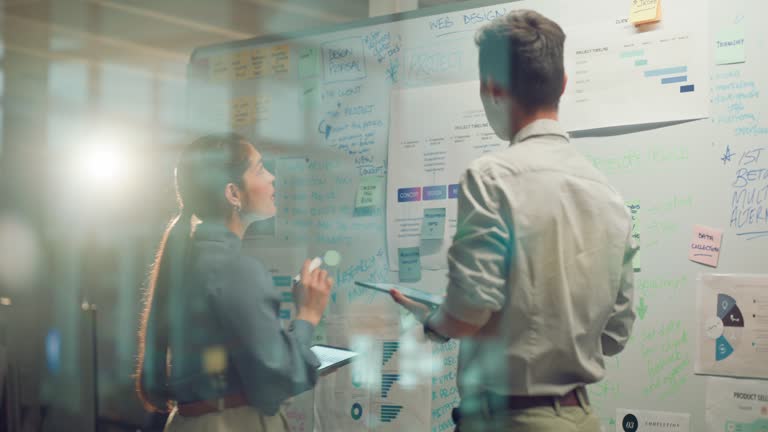
Multilingual website design is incomplete without considering Multilingual SEO.
Like any other website, visibility in search engines is crucial for attracting organic traffic.
However, SEO in a multilingual environment has its own complexities.
The most important factor is the correct use of the hreflang tag, which was previously mentioned.
This tag tells Google and other search engines which version of the page is suitable for which language or geographical region.
Correct hreflang implementation prevents Duplicate Content issues and allows search engines to display the best version to the user.
Local keyword research for each language is the next and very important step.
Keywords should be chosen based on how native users search and the common idioms in that language, not just direct translations from the original language.
Tools like Google Keyword Planner or Ahrefs can be helpful in this regard.
Additionally, topics such as Local SEO should also be considered; for example, if your business has physical branches in different countries, optimizing for local searches in each region is very important.
URL structure also plays a key role in multilingual SEO.
Using subdirectories (e.g., example.com/fr/) is often preferred for SEO because it preserves the authority of the main domain.
Subdomains (fr.example.com) and top-level domains (example.fr) are also options, but their SEO management can be more complex.
Producing high-quality and relevant content in each language naturally helps improve rankings.
This is a specialized and instructional approach that requires continuous monitoring and updates.
Link Building at an international level should also be considered, meaning you should strive to get backlinks from relevant and reputable websites in each country to increase the authority of your pages in that specific language.
User Experience (UX) in Multilingual Sites
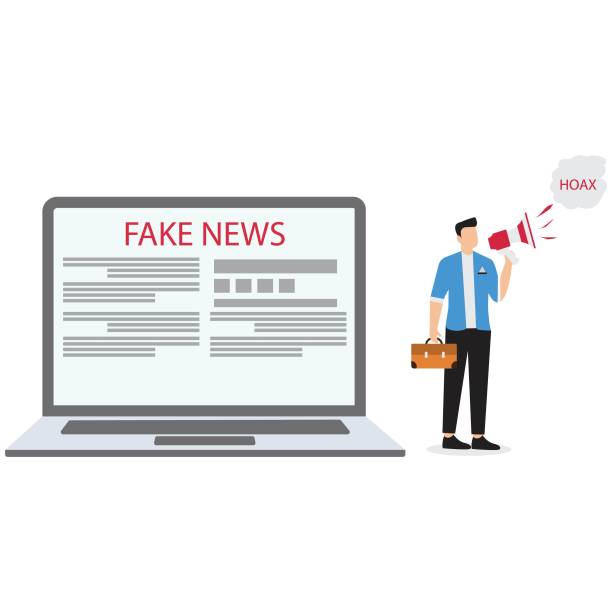
Multilingual website design is not limited to technical and content aspects; user experience (UX) on a multilingual website plays a vital role in retaining and converting visitors into customers.
Good UX makes it easy for users to find their desired language and interact with the website.
The placement of the language switcher button is very important; it’s often located in the website header, in the top right or left corner, as a flag icon, language abbreviation (like EN, FR, DE), or an accessible dropdown menu.
It is important that this option is clearly visible and clickable.
Consistency in design and user interface across all language versions is essential.
Although content is localized, the overall structure, navigation, and aesthetics of the website should remain consistent so that the user does not get confused when changing languages.
Page loading speed is also important on a multilingual site; ensuring that your servers can deliver content quickly to users worldwide can be enhanced by using a Content Delivery Network (CDN).
Also, it should be noted that the length of texts may vary in different languages (e.g., an English text might be longer in Persian), so page layouts must be flexible.
Furthermore, supporting local formats such as phone numbers, addresses, and date and time formats greatly helps improve the user experience.
For example, displaying a phone number with the relevant country code and its correct format is much easier for local users.
Continuous evaluation of user feedback through surveys and analytical tools can help identify weaknesses and continuously improve the user experience.
This guiding and engaging section emphasizes that a multilingual site should be not only functional but also pleasant for its users to achieve business goals.
This aspect is often overlooked, but in fact, it is the heart of success in attracting international audiences.
Maintenance and Updates of Multilingual Sites

Multilingual website design is not a one-time project, but an ongoing process that requires regular maintenance and updates.
New content, new products, or changes in services, all must be updated in all languages.
This can be a time-consuming and complex task, especially for websites with high content volume.
Establishing a regular content plan and specific processes for translating and localizing new content is essential.
Using Translation Management Systems (TMS) can automate this process and increase your team’s efficiency.
These tools allow for managing different language versions, tracking translation progress, and ensuring consistency of terminology.
In addition to content updates, technical updates of the platform and plugins must also be carefully performed.
Due to the greater complexity of multilingual sites, every update should first be tested in a staging environment to ensure that no problems are created in content display or functionality in any of the languages.
Website security must also be carefully monitored over time; as the number of languages increases, the potential for vulnerabilities may also increase.
Therefore, using Web Application Firewalls (WAF) and security monitoring tools is recommended.
News and analytical reports on site performance in each language should be continuously reviewed.
Has traffic in a specific language decreased? Is the conversion rate low in a particular region? These questions can indicate a need to revise content, SEO, or user experience in that language.
Below is a table for a multilingual site maintenance checklist:
| Maintenance Item | Description | Suggested Frequency |
|---|---|---|
| Content Updates | Translation and localization of new content (blog, products, news) | Weekly/Monthly (depending on content publication) |
| Broken Link Check | Ensure all internal and external links work correctly in each language | Monthly |
| Technical Updates | Update CMS, plugins/modules, and theme in a testing environment | Quarterly/As needed |
| SEO Monitoring | Monitor keyword rankings, hreflang status, and crawl errors | Monthly |
| Backup | Back up database and files | Daily/Weekly |
Security and Stability in Multilingual Website Design

With the increasing complexity and scope of a website resulting from multilingual website design, the importance of its security and stability also significantly increases.
Every new section, every additional plugin or module for language management, can create a potential vulnerability that can be exploited by attackers.
Therefore, adhering to cybersecurity principles is vital at all stages of multilingual website development and maintenance.
This includes keeping the CMS core, all plugins, and themes up to date, using strong passwords, and two-factor authentication (2FA) for access to the admin panel.
Web Application Firewalls (WAF) can protect your website against common attacks such as SQL injection and XSS.
Continuous monitoring of server logs and suspicious activities is also essential.
For stability, ensuring that your hosting server can manage traffic from various geographical regions is important.
Using Cloud Hosting services that offer scalability and global distribution can help maintain your website’s performance against traffic fluctuations and outages.
Planning for regular backups of all website data (database and files) in all languages is crucial.
Off-site Backups can enable you to quickly recover your website in the event of unforeseen incidents such as data loss or cyber attacks.
This is a specialized and guiding approach that helps you protect your investment in a multilingual website.
Ignoring security can lead to data loss, damage to brand reputation, and even legal penalties, so it must be given high priority.
Are you tired of your company’s website not meeting your expectations? With Rasawab, design a professional website that truly represents your business.
✅ Increased acquisition of new customers and sales leads
✅ Enhancing your brand’s credibility and trust with the audience
⚡ Get free website design consultation!
Performance Evaluation and Data Analysis
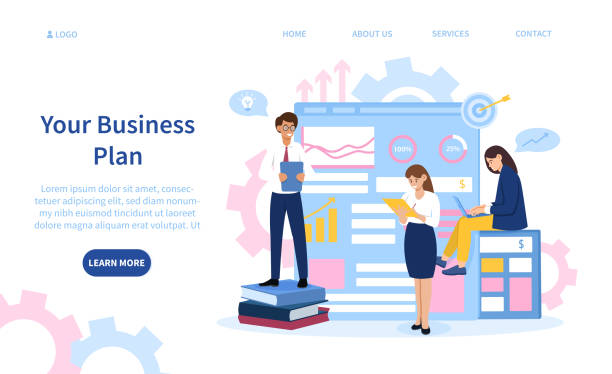
After multilingual website design and launch, the next critical step is performance evaluation and data analysis.
This helps you understand how your website is performing in each language and geographical region and where improvements are needed.
Google Analytics and Google Search Console are powerful tools that can provide valuable insights.
Using these tools, you can monitor website traffic based on language, country, and user devices.
One of the most important metrics is the Conversion Rate for each language.
Do French users make purchases as much as German users? If not, why? These questions can help you identify problems in translation, localization, or even user interface design for that specific language.
User behavior analysis, such as Bounce Rate, Time on Site, and Click Paths, can provide deep insights into the level of user engagement with your content in each language.
This is an important analytical opportunity for continuous improvement.
Also, monitoring keyword rankings and organic traffic from search engines for each language is essential.
If your ranking for specific keywords in one language is low, you may need to revise your local SEO strategy or content optimization.
Conducting A/B tests for various elements (such as titles, CTA buttons) in different languages can also help identify the best approaches.
This instructional approach helps you make data-driven decisions and maximize the performance of your multilingual website.
Future of Multilingual Website Design and New Trends

The digital world is evolving rapidly, and multilingual website design is no exception.
New technological trends will significantly impact the future of this field.
One of the most prominent trends is the advancement of Artificial Intelligence (AI) in machine translation.
While machine translations are not yet a complete substitute for human translators, their quality is constantly improving, and they can be very useful in initial processes and for translating large volumes of content.
Using AI for automatic content localization and even smart content generation for different languages is among future potentials.
Voice Search and smart speakers are also changing how users interact with the web.
This means the need to optimize content for conversational and more natural responses in different languages.
Future multilingual websites must be able to answer user questions in any language, not just traditional keywords.
Virtual Reality (VR) and Augmented Reality (AR) may also offer new ways to deliver multilingual content and localized experiences.
The challenging question here is: will the need for localization specialists and human translators decrease with technological advancements? Perhaps not entirely, but their role will change.
They will move more towards editing, quality control, and localizing more complex and strategic content.
Integrating content management systems with AI translation tools is a promising trend that can make the process of maintaining and updating multilingual websites much more efficient.
This analytical section helps us prepare for the future of international website design and leverage new opportunities.
Frequently Asked Questions
| Question | Answer |
|---|---|
| What is multilingual website design? | It is the design of a website whose content is available to users in several different languages, allowing users to choose their preferred language. |
| Why is a multilingual website important? | To access international audiences, increase site traffic, improve user experience for non-Persian speaking visitors, and expand business into global markets. |
| What are the benefits of having a multilingual website? | Increased international SEO, attracting new customers from different countries, enhancing business credibility and professionalism, and reducing bounce rate by providing understandable content. |
| What are the methods for implementing a multilingual website? | Using subfolders (e.g., example.com/en/), subdomains (e.g., en.example.com), or separate top-level domains for each language (e.g., example.com and example.de). |
| Which URL structure is best for international SEO? | Subdirectories (e.g., example.com/en/) are often preferred for SEO because they consolidate the main domain’s authority, although each method has its pros and cons. |
| How does a multilingual website affect SEO? | By providing content in different languages, the site appears in local search results for those languages, click-through rates and traffic increase, and the overall domain authority of the site improves. Correct use of hreflang tags is crucial. |
| How is content translation managed? | You can use professional translators, machine translation tools (with human editing), or Content Management Systems (CMS) with built-in multilingual capabilities or relevant plugins. |
| What are the common challenges in multilingual website design? | Managing translated content, maintaining design consistency across different languages, compatibility with Right-to-Left (RTL) languages like Persian and Arabic, optimizing SEO for each language, and choosing an appropriate URL structure. |
| How do I manage text direction (LTR/RTL) on a multilingual site? | For Right-to-Left languages (like Persian), you need to apply specific CSS styles to change text direction, element alignment, and table direction. Often, this is done using the `direction: rtl;` property and other related settings. |
| How can users change the site’s language? | Typically, by using a clearly placed button, dropdown menu, or language selection widget in the header or footer of the site. Automatic detection of the user’s browser language and suggesting a language change is also common. |
And other services of Rasa Web advertising agency in the field of advertising
Smart Marketplace: A professional solution to increase website traffic with a focus on precise audience targeting.
Smart SEO: An effective tool for user engagement through attractive user interface design.
Smart Conversion Rate Optimization: A specialized service for campaign management growth based on user experience customization.
Smart Marketing Automation: An effective tool for user engagement through precise audience targeting.
Smart Marketplace: Transform customer behavior analysis with marketing automation.
And over hundreds of other services in the field of internet advertising, advertising consultation, and organizational solutions
Internet Advertising | Advertising Strategy | Sponsored Articles
Resources
An article about multilingual website design and its benefits
Multilingual website development services
Guide to building a multilingual website
The importance of a multilingual site in digital marketing
? Are you looking to elevate your business in the online space? Rasawab Afarin, a leading digital marketing agency, is your reliable partner on the path to digital success, offering specialized services including custom website design, professional SEO, and targeted advertising campaigns.
📍 Tehran, Mirdamad Street, next to Bank Markazi, Kazerun Jonubi Alley, Ramin Alley, No. 6

